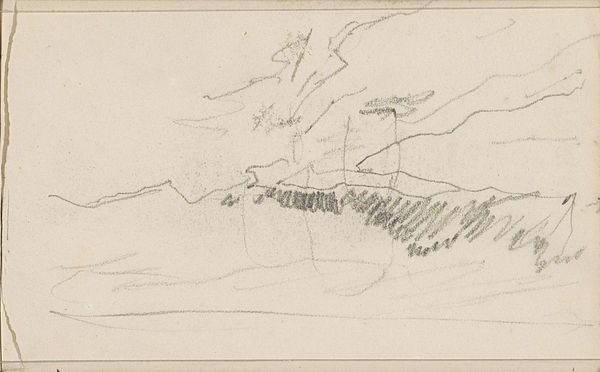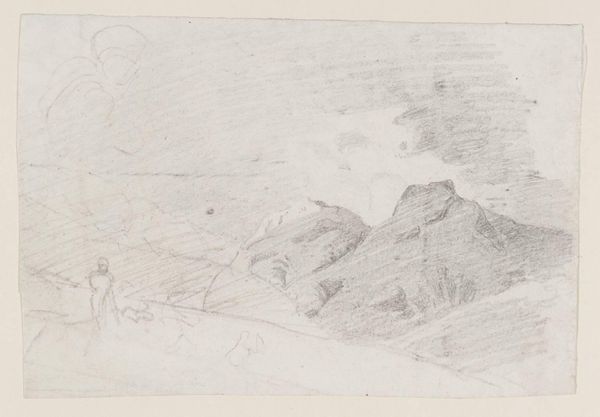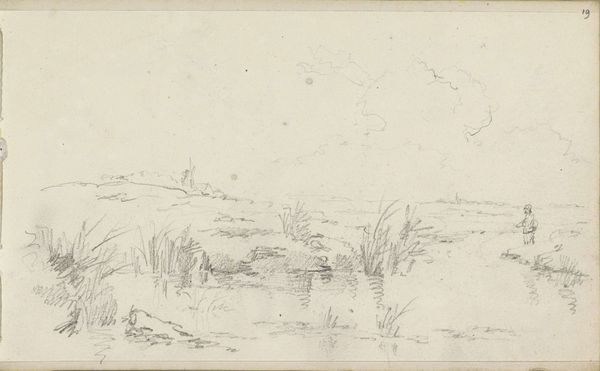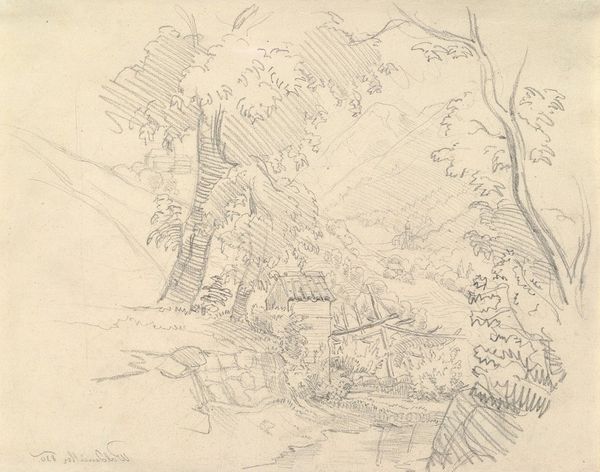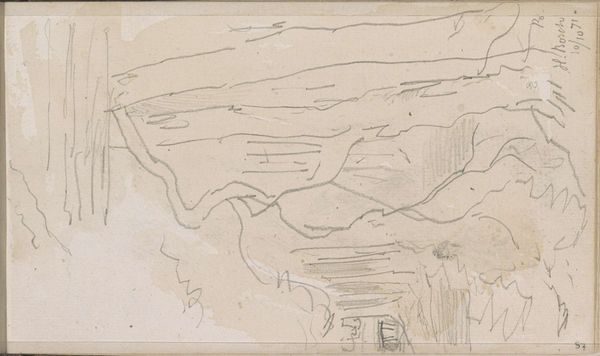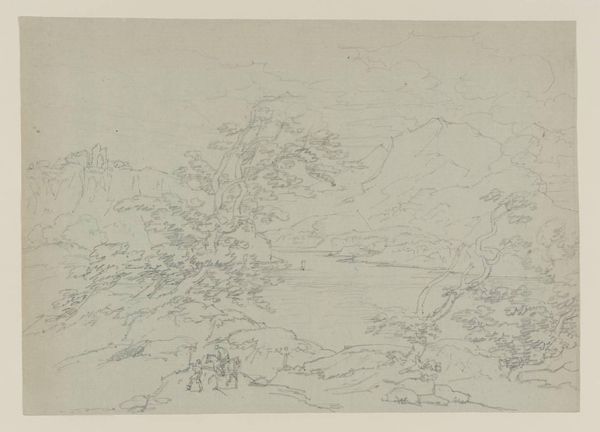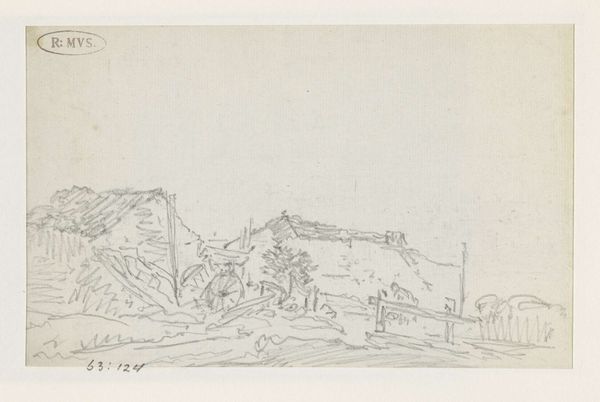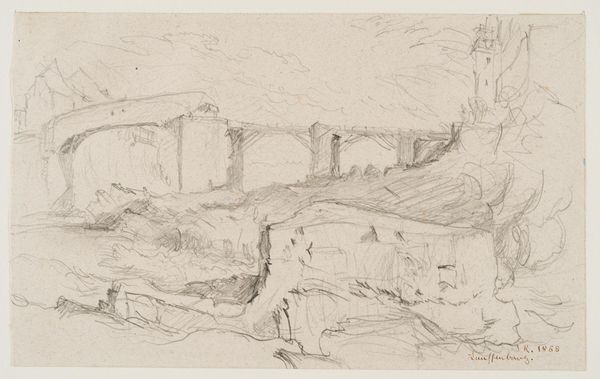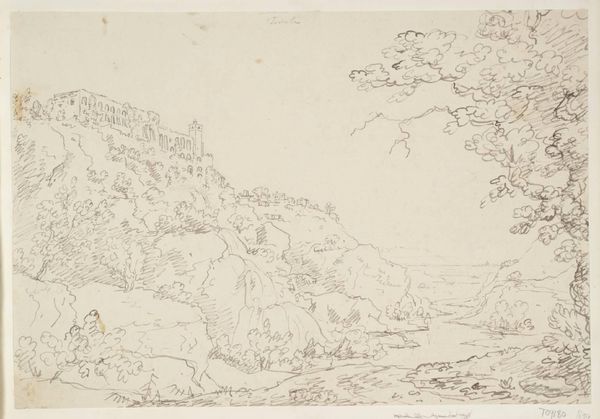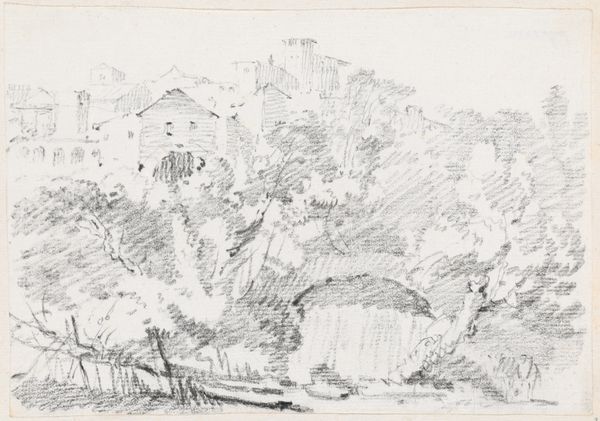
drawing, pencil
#
drawing
#
landscape
#
romanticism
#
pencil
Dimensions: height 80 mm, width 155 mm
Copyright: Rijks Museum: Open Domain
Curator: So, here we have Georges Michel’s "Sketch of a Ruin," dating roughly between 1773 and 1843. It's a pencil drawing, a quick study of what appears to be, well, a ruin. Editor: My immediate feeling is one of... fragility. The light touch of the pencil makes the whole scene seem ephemeral, like a memory fading away. There’s something very wistful about it. Curator: That resonates. Michel was deeply drawn to the melancholic beauty of decay, and to landscape, naturally. But also his work is really interesting when thinking about materials. He wasn't interested in creating an illusionistic picture, for instance, or a drawing that hid the work that had gone into making it. You can really see the touch of the pencil here; this emphasis makes it a drawing *about* drawing. Editor: Exactly, we get to see it as both a finished work and a process. Thinking about that connects this tiny, delicate thing to much wider social forces too. The cost and availability of pencils, the artist's education and what they saw drawing to *be*... and all that fed into how they pictured the decline of something. Is the ruin sad in itself, or is our society forcing it into that emotional context? Curator: That's an astute point. And Michel's work, though often categorized as Romantic, does have this unflinching gaze at the reality of things. It's not idealized ruin, like in some grand history painting; it’s simply...there. Existing materially. Editor: And of course those quick pencil strokes and bare marks link to the later focus in drawing on pure expressivity... How materials shape the end artwork, instead of just being a route *to* it. Curator: Absolutely. This little drawing packs a surprising punch, doesn’t it? The unassuming technique draws us closer, inviting reflection on art itself as much as on lost grandeur. Editor: It does—this emphasis on process as part of the point of making it also reminds us to keep looking and engaging more fully with what artworks actually *are*. Not to only accept the surface. Curator: Indeed. A humble piece holding some grand ideas after all.
Comments
No comments
Be the first to comment and join the conversation on the ultimate creative platform.

